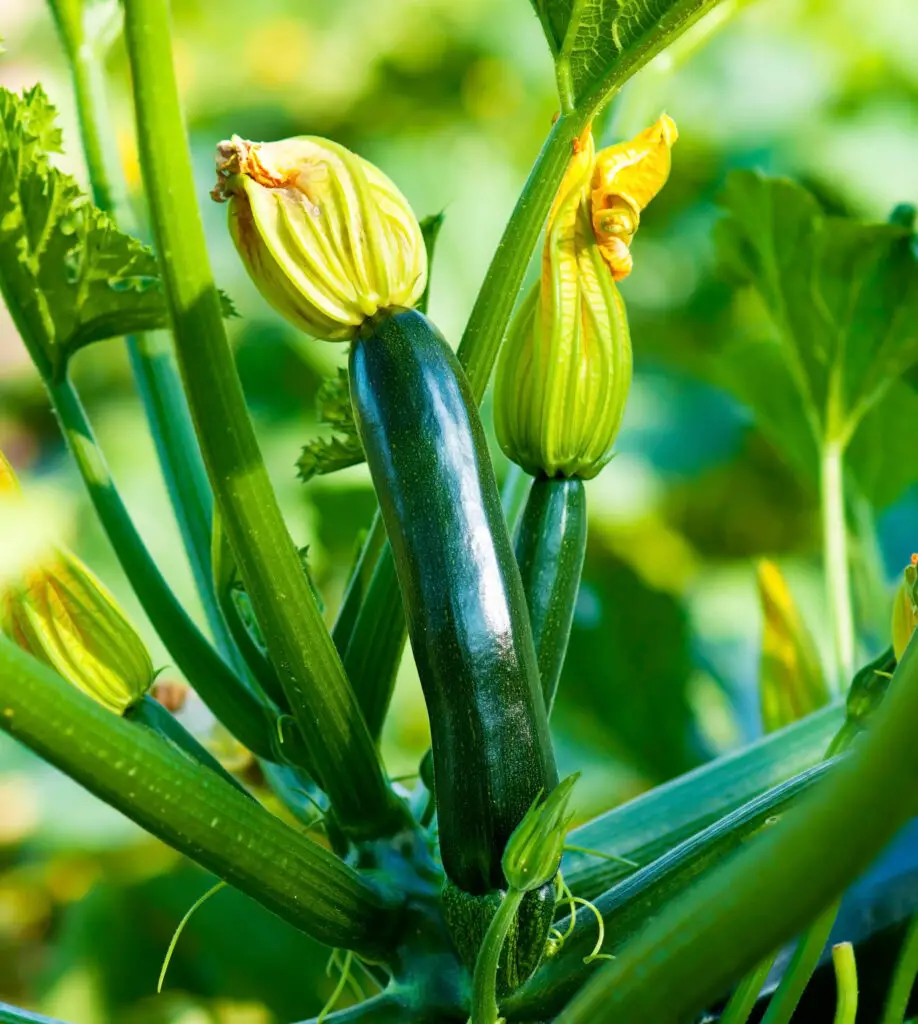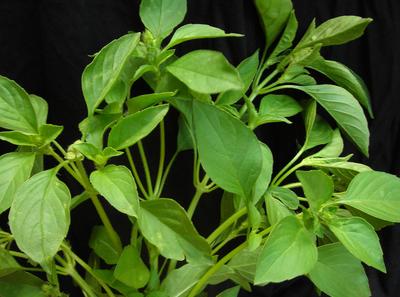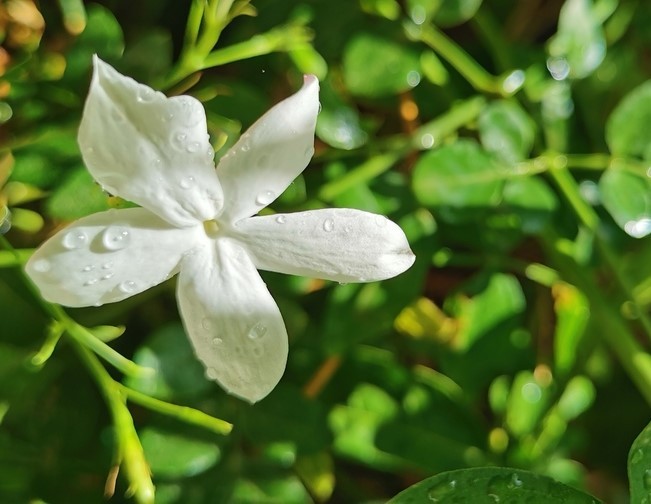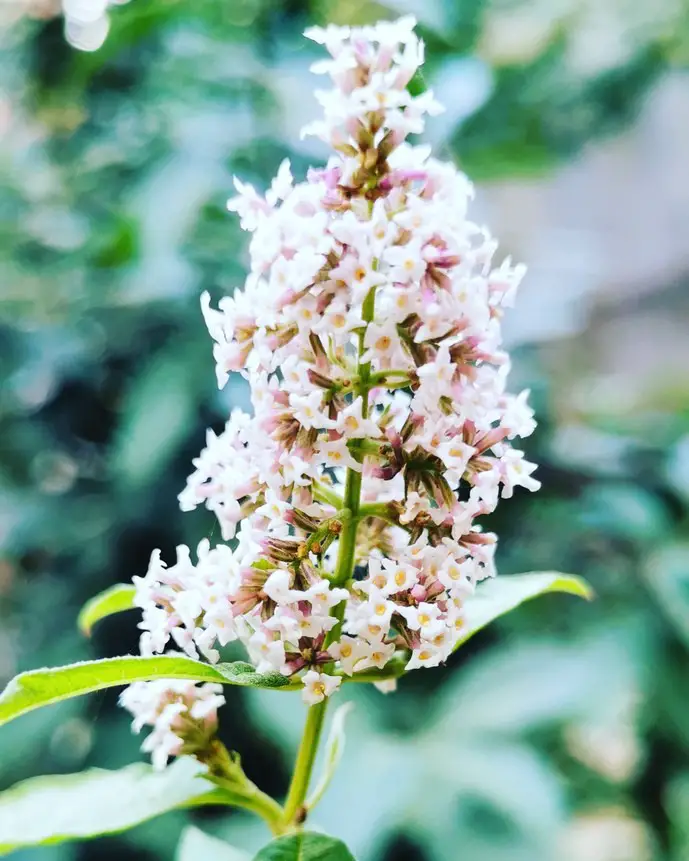For a while, I did not know that we can collect and harvest zucchini seeds from our harvested veggies. However, once I learned that we can actually obtain seeds from the zucchini, I was thrilled. Especially the harvest of zucchini plants doesn’t last as long as tomatoes and eggplants.
Zucchini is a summer vegetable. During August, it starts to blend into its disappearance. The first time I harvested the seeds, I was so excited to be able to safely get a large number of zucchini seeds for next year.
Here’s how to collect and harvest zucchini seeds successfully. The following steps are very easy, even a beginner can do it.
Grow Zucchini for Seeds
Growing zucchini for seeds is not so different from growing it for food. In fact, it is the same approach. The only difference is that once the zucchini is ready to be harvested, leave it on the vine for an additional month until it either develops a woody kind of texture and becomes harsh and very solid, or becomes very fluffy and mushy depending on the seed variety. However, either way, its size should be around 10 inches long.
I must note that before planting your zucchini for seeds, make sure you choose a good seed quality. But this is totally up to you. In my opinion, this would be a great investment to buy high-quality zucchini seeds and then harvest a few zucchinis for the seeds. And then, BOOM! you got yourself double the number of seeds to grow even more plants.
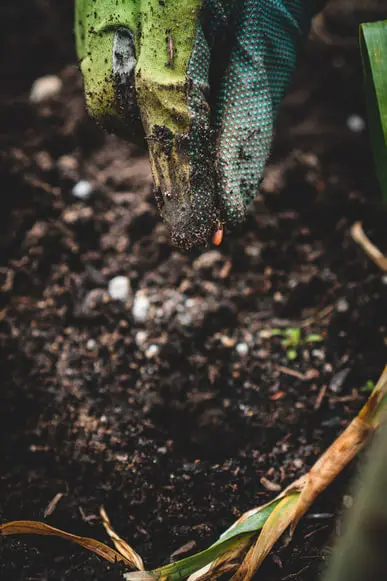
You will never run out of zucchini, isn’t that so tempting? No more buying zucchini seeds, forever! Also, fresh zucchini seeds can be stored for up to 3 years.
Another thing I must mention is that, if you use low and bad-quality seeds, they might weaken and not be able to grow for seeds.
Collecting Zucchini Seeds
Once your zucchini reach the right size, cut off your fruit from the stem. At this stage, if your zucchini is soft and mushy, try to separate it in half using only your hands so that you won’t cut or waste any seeds.
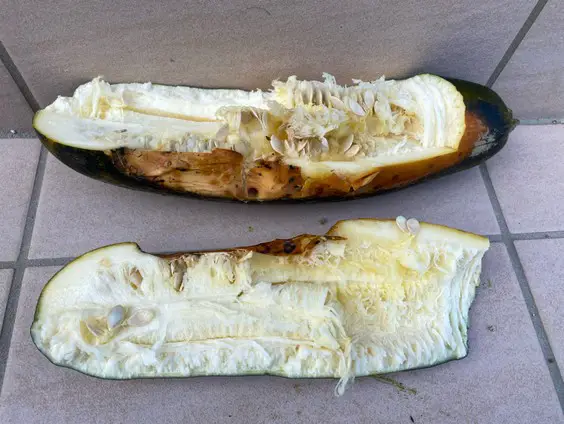
But if your zucchini variety is hard and solid, then you must use a knife to cut it in half. You’d sacrifice a few seeds, but that shouldn’t be much. Though you can save all the seeds if you try to insert the knife gently and make a small crack on the top of the fruit, then break it by force in half. That way, no seeds will be ruined.
Remove the seeds from the fruit using your hands or tweezers. You might find immature seeds there as well. That indicates that you didn’t let the fruit grow to its fullest. But you shouldn’t worry about it as long as you find mature ones.
Washing the Zucchini Seeds
All seeds need to be washed with normal water. Nothing special about the technic so you don’t need to worry. Remove all that gooey texture from the seeds well.
The reason why all types of seeds need to be washed is that they are covered with germination inhibitors.
Save and Pick the Best Seeds
One way to know which zucchini seeds are good seeds is by putting all the seeds in a bowl full of water. The sunken ones are bad news, and the floating ones are the good ones that you should keep.
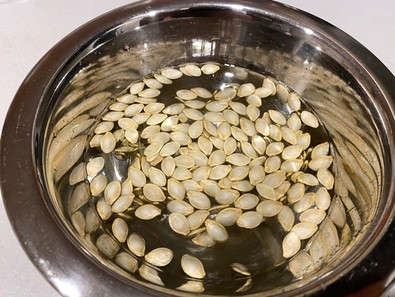
Normally, it is exactly the opposite. The ones that sink mean that they are full and good. But zucchini seeds seem to be working differently.
I believe the reason why zucchini seeds float is that zucchini has thin skin on the surface of the seed. Therefore, air gathers between the thin skin and the seed body, so it won’t sink even if it is soaked in water. Magic!
Dry the Seeds
After going through all that process, which is not a lot. Bring some paper towels or paper wax and spread the seeds on there to dry by air.
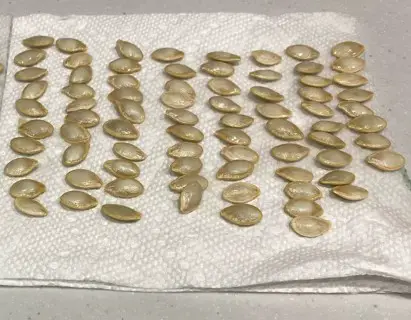
The drying process can last a few days, so be patient about it. Once you make sure that they are fully dry, just by the look and the touch of it, store them in a container or a plastic bag to use next year. Note that you must save them in a dry place where there is no humidity.
Zucchini seeds have the same lifespan as pumpkins, so they can be used repeatedly for about three years. From one zucchini fruit, you should obtain at least 150 seeds.
Conclusion
The method is not difficult, just let the pollinated zucchini mature for at least a month. As it matures, it will change color from the conventional color. The variety of the zucchini I used is green, but it turns yellow as it matures. Some other varieties obtain a darker green color, others become lighter (it really depends on the variety)
Then all you have to do is divide the mature zucchini in half and take out the seeds. I was able to get 160 seeds this time. With this amount of seeds, I think I will be safe for next year for sure.
If you often grow zucchini, why don’t you prepare for seeding before the end of the zucchini harvest season? You have nothing to lose except for one zucchini fruit. Which eventually will fill your garden next year. It is a great investment. Try it.

